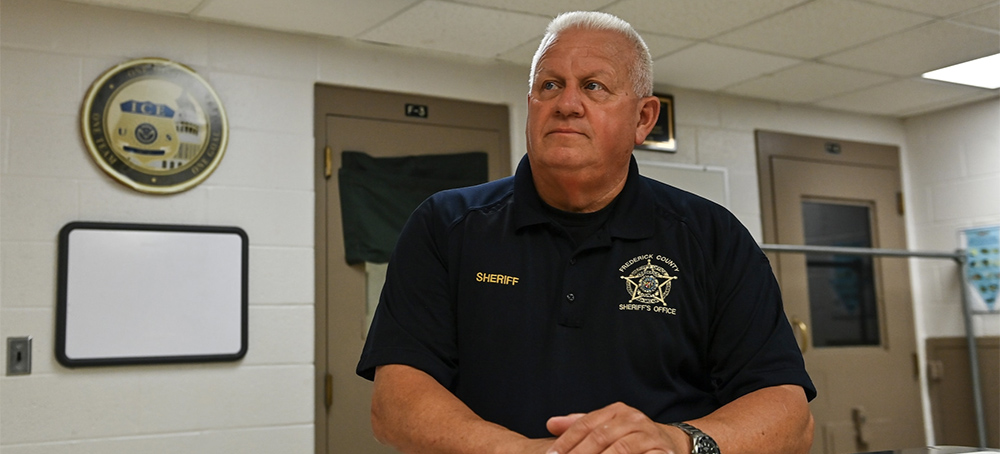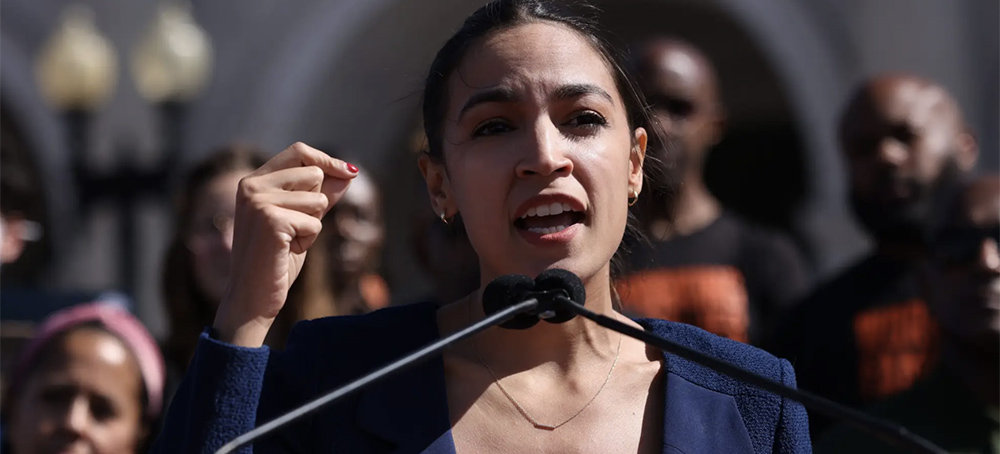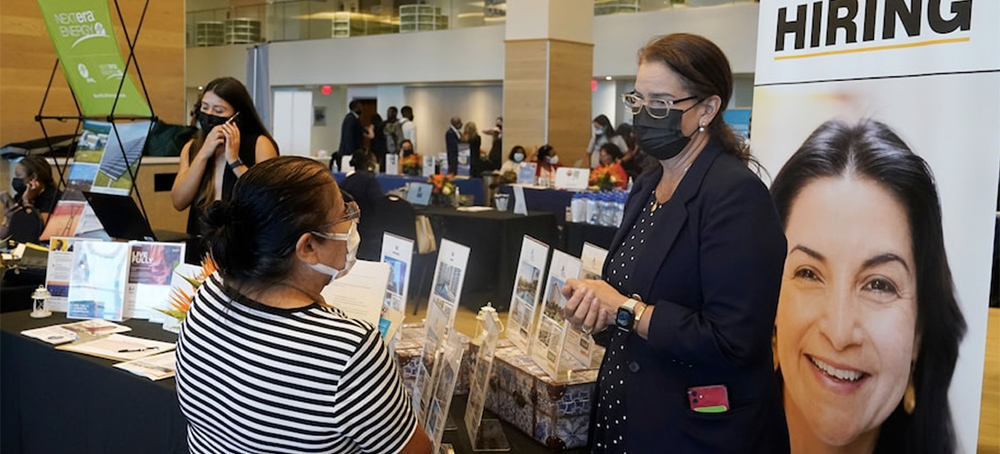Live on the homepage now!
Reader Supported News
But there is more. I’ve waited to assess the Glasgow copout, the insane immorality plays back home in America, and the depredations by authoritarians who seize on undefended democracy to reshape what’s left of a reasonably good planet into hostile territory where genocide, mass starvation and plunder go unchecked. And I’m reading mountains of thoughtful old stuff that explains how past follies got us into this mess.
Ironically, the outlook is hopeful. Aristotle pegged us humans a long time ago. Most are basically good but too easily distracted by daily lives. The bad ones, if fewer, know what they want and how to get it. When the danger was only George W. Bush’s neocons, Samuel L. Jackson offered a rallying cry: Wake the Fuck Up. But we didn’t.
The Mort Report began as emailed briefings to friends and family from an old-crocodile reporter still cruising the swamps. After a lifetime with the Associated Press and as a past editor of the International Herald Tribune, I have tried hard to analyze observed fact and filter out personal opinion to preserve hard-earned credibility. Now it is time to rant.
We need to think beyond Donald Trump, whose animal instincts brought out the worst in our worst. He is no Hitler or Mussolini, each of whom read books, enlisted for combat and had an actual plan for a world shaped in his own twisted image. Down here, wild boars known as sangliers are a closer fit. They blindly trample anything in their path to feed themselves, heedless of the destruction.
America’s power to do good depends on its two parties’ ability to find common ground. Grand Old Party presidents fought a war to free slaves, protected wilderness and resources, tried to curb a “military-industrial complex,” opened a closed China and much else. Today, the “GOP” is closer to Greed-Obsessed Pigs. If that doesn’t change, America is over.
Expect a new sort of Mort Report soon. I’ll try to find what’s left of my sense of humor. But my aim is to probe global crises and connect the dots into big pictures to help readers make decisions based on reality. I’ll need your help for a wide reach. Please encourage friends and family – especially young ones – to sign up at mortreport.org. If you can, donate on the Get-Involved link below, or email mort.rosenblum@gmail.com to make a tax-deductible contribution. My editors and I aren’t paid, but firsthand reporting comes at a cost.
Thank you.
Mort
(if you’re reading this in French via no-humans-involved translation, I’m not Dead yet)
Mort Rosenblum has reported from seven continents as Associated Press special correspondent, edited the International Herald Tribune in Paris, and written 14 books on subjects ranging from global geopolitics to chocolate. He now runs MortReport.org.
Reader Supported News is the Publication of Origin for this work. Permission to republish is freely granted with credit and a link back to Reader Supported News.
 Frederick County Sheriff Chuck Jenkins at his jail in Maryland on June 28, 2021. 'I believe in my heart of hearts that this is a public safety benefit to the country, to the county and to this community,' Jenkins has said of the 287(g) federal-local collaboration. (photo: Ricky Carioti/WP)
Frederick County Sheriff Chuck Jenkins at his jail in Maryland on June 28, 2021. 'I believe in my heart of hearts that this is a public safety benefit to the country, to the county and to this community,' Jenkins has said of the 287(g) federal-local collaboration. (photo: Ricky Carioti/WP)
Emails reveal efforts to expand controversial 287(g) program
despite longstanding concerns about discriminatory policing
In the photo, Jenkins and more than three dozen other sheriffs posed under a chandelier in the East Room of the White House with a beaming President Donald Trump and Vice President Mike Pence.
Jenkins, serving his fourth term as sheriff in the western Maryland county, quickly forwarded the photo to an acquaintance. “Check this out,” he wrote in an email obtained by The Washington Post.
“Pretty important!” she replied moments later. “You all meet to discuss how to get rid of the illegals?”
“Indeed!” Jenkins wrote back. “I have had the pleasure of being with the Pres on at least five occasions.”
The White House gathering in September 2018 was part of a two-day media and lobbying blitz by the Federation for American Immigration Reform to promote border control and immigration enforcement, including a contentious national program known as 287(g) that for years has drawn support from Jenkins and other sheriffs.
Operated by U.S. Immigration and Customs Enforcement, the program empowers state and local law enforcement officers to act with federal authority: questioning, reporting and detaining undocumented immigrants. Although ICE promised that the program would focus only on serious criminals, pro-immigration groups have repeatedly warned that the partnerships enable hard-line sheriffs to target undocumented immigrants leading peaceful lives.
Despite mounting concerns about discriminatory policing, the Trump administration aggressively recruited local law enforcement partners and courted sheriffs who championed similar views on immigration policy, according to dozens of internal ICE emails obtained by The Post.
 Rep. Alexandria Ocasio-Cortez (D-New York) speaks during an event outside of Union Station in Washington, DC, on June 16, 2021. (photo: Win McNamee/Getty Images)
Rep. Alexandria Ocasio-Cortez (D-New York) speaks during an event outside of Union Station in Washington, DC, on June 16, 2021. (photo: Win McNamee/Getty Images)
ALSO SEE: Democrats Get Hopeful Sign From Parliamentarian on Immigration
In a letter led by Democratic Reps. Jesús García (Ill.), Lou Correa (Calif.), Adriano Espaillat (N.Y.), Grace Meng (N.Y.) and Alexandria Ocasio-Cortez (N.Y.), the members urged Senate leaders to reinstate a pathway to citizenship in the Senate version of President Biden's signature social spending and climate bill.
"The House version of the BBB Act limits relief for certain undocumented individuals to a five-year parole status, yet another form of temporary reprieve. We now write to urge you and the rest of our colleagues in the Senate to reinstate a pathway to citizenship for Dreamers, TPS [temporary protected status] holders, farm workers, and essential workers in the Senate’s version of the reconciliation bill," wrote the lawmakers.
García, Correa and Espaillat were dubbed "the three amigos" for their push to include a pathway to citizenship in the House version of the nearly $2 trillion spending bill.
Their entreaties were rebuffed, despite no Democrats coming out publicly against stronger immigration protections in the bill.
Ultimately, the House-passed version included a parole option, which would grant 6.5 million foreign nationals a temporary parole status that would grant them five-year work and travel permits but not permanent residency, the first path toward citizenship.
"Though this bill delivers urgently needed relief to undocumented immigrants, it falls short of the pathway to citizenship that I’ve been fighting for and that immigrants deserve," said García.
"It means families separated for decades can finally be reunited, workers can speak out against abuses without fear of retaliation, and immigrants can wake up every morning with some peace of mind," he added.
While the House-passed bill would enact the broadest immigration benefits in 35 years, it falls short of the legalization promises given by Democrats, including Biden, on the campaign trail.
The three amigos and their allies in the Senate — Sens. Dick Durbin (D-Ill.), Bob Menendez (D-N.J.), Alex Padilla (D-Calif.), Catherine Cortez Masto (D-Nev.) and Ben Ray Luján (D-N.M.) — called for broader reform as the BBB Act's content was being negotiated.
The Senate parliamentarian rebuffed two immigration plans that included permanent residency for millions — and has yet to review the House-passed parole plan.
To pass the BBB Act without GOP Senate support, Democrats are using the reconciliation process, which requires a bill to comply with strict rules, and each chamber's parliamentarian is tasked with giving advisory opinions on a bill's compliance with said rules.
Grassroots immigrant advocates, who called on Democrats to support the three amigos, laid out the case for the Senate to push forward on legal permanent residency despite the parliamentarian's objections.
Now, nearly half of the House Democratic Caucus is pushing Senate leaders in the same direction, based on Democrats' campaign promises to immigrant communities to legislate a path to citizenship.
"Whether we keep our promise or not is a question of political will. We do understand that the Senate Parliamentarian has issued a memorandum dismissing – despite evidence to the contrary – the budgetary impact of providing a pathway to citizenship. But the role of the Parliamentarian is an advisory one, and the Parliamentarian’s opinion is not binding," wrote the members.
The letter signed by 91 members, including Congressional Progressive Caucus Chairwoman Pramila Jayapal (D-Wash.) and Congressional Hispanic Caucus Chairman Rep. Raul Ruiz (D-Calif.), follows the advice of grassroots immigrant rights groups and legal scholars, who have for weeks advised congressional Democrats to disregard the parliamentarian's opinion on the matter.
"As this bill heads to the Senate, we must fight to ensure that we do not squander this once-in-a-generation opportunity. The Senate must establish a pathway to citizenship and finally provide Dreamers, TPS holders, farm workers, and essential workers with the stability and equal recognition they deserve," said Ocasio-Cortez.
 Pierce County Sheriff's Department. (photo: Fox 13 Seattle)
Pierce County Sheriff's Department. (photo: Fox 13 Seattle)
WaBLM is asking the U.S. Attorney to probe the Pierce County Sheriff's department.
In the last month, there have been many cases of police officers using deadly force and excessive force on Black people and other people of color.
According to a report from the Pierce County Sheriff’s Department, deputies are disproportionately using force against Black and Native American people. Shocking.
The report displays how Black people are 5.62 times more likely, and Native American people are 2.31 times more likely to have force used against them by Pierce County Deputies.
As a result, the Washington Black Lives Matter Alliance is calling for a civil rights probe into the Pierce County Deputies.
From Fox 13 Seattle:
Most concerningly, the report found Black children experience force between seven and 13 times more often than white children.
In light of this, WaBLM lead strategist Sakara Remmu met with U.S. Attorney Nick Brown to discuss launching a civil rights investigation against the agency.
“It doesn’t get more clear than these numbers; the need for a new vision for justice is overdue at the Pierce County Sheriff’s Department,” said WaBLM’s Carol Mitchell, who formerly served as Senior Counsel for Justice Services in Pierce County.
The report suggests that deputies also filed ‘limited information’ on their justifications for using force when documenting it.
With the passing of police reform legislation in 2021, the report recommends a thorough analysis of how the changes will affect the disproportionate use of force, as well as updating statewide standards of data collection to provide better information across counties.
Per the report from Fox 13 Seattle, Carol Mitchell, who in the past served as Senior Counsel for Justice Services in Pierce County, wants the investigation to go federal and is calling for the U.S Department of Justice to step in and probe the Pierce County Sheriff’s Department.
I don’t blame her, the numbers are appalling. But, this situation is not unique to Pierce County. It’s a problem happening all around the country. Data like this seems to be saying the same thing in counties and cities where people of color live.
 Marriott human resources recruiter Mariela Cuevas, left, talks to Lisbet Oliveros during a September job fair at Hard Rock Stadium in Miami Gardens, Fla. The number of Americans filing initial jobless claims tumbled to their lowest level in 52 years last week, the Labor Department reported Wednesday. (photo: Marta Lavandier/AP)
Marriott human resources recruiter Mariela Cuevas, left, talks to Lisbet Oliveros during a September job fair at Hard Rock Stadium in Miami Gardens, Fla. The number of Americans filing initial jobless claims tumbled to their lowest level in 52 years last week, the Labor Department reported Wednesday. (photo: Marta Lavandier/AP)
The 71,000 slide marks the eighth straight week of declines, a reflection of a tight labor market that has companies scrambling to retain and expand their workforces
Chief among them were the surprisingly strong marks for the labor market. The number of Americans filing initial unemployment claims tumbled to 199,000 — the lowest level since November 1969 — the Labor Department reported Wednesday.
Separately, the Commerce Department said that consumer spending increased by 1.3 percent in October, its fastest pace since March, in a sign that Americans are continuing to spend despite rising prices.
Meanwhile, the trade deficit in goods narrowed 14.6 percent in October according to a Commerce Department estimate, to $82.9 billion from $97 billion in September. That’s its lowest level since October 2020, according to PNC Bank economist Bill Adams.
“The recovery is picking up in the fourth quarter after head winds from the Delta wave and supply chain turmoil,” Adams said. “These releases vindicate the argument that the problems that held back the economy in the third quarter were temporary.”
Of particular note were unemployment claims, a proxy for layoffs, which fell more than 71,000 the week ending Nov. 20, compared with the week before. It represented the eighth straight week of declines and a pivotal shift, as claims are now well below pre-pandemic levels. In 2019, average weekly jobless claims hovered around 220,000. Some economists, however, cautioned that the numbers were likely a product of seasonal adjustments.
Still, the drop marks a stark contrast with this time last year, when roughly 700,000 claims were filed. It’s also a reflection of the tight labor market, which has companies scrambling to retain and expand their workforces.
“It is fair to say we didn’t see that coming,” Mark Hamrick, senior economic analyst at Bankrate, said Wednesday in emailed comments to The Post. “Getting new claims below the 200,000 level for the first time since the pandemic began is truly significant, portraying further improvement.”
President Biden on Wednesday touted the unemployment report as an example of the “historic economic progress” being made by his administration.
“We have more work to do before our economy is back to normal, including addressing price increases that hurt Americans’ pocketbooks and undermine gains in wages and disposable income,” Biden said in a statement.
The trade deficit data was hailed as a positive sign about the potential easing of supply chain disruptions.
“The peak is likely past for the trade deficit,” said Adams, the PNC Bank economist. “The trade deficit surged as American consumers splurged on consumer goods during 2020’s lockdowns, and continued to rise in the summer and autumn of 2021 as the turmoil in global shipping freaked out importers, who front-loaded purchases ahead of the holiday shopping season. The supply chain is coming unclogged now.”
Adams said that the cost to ship a freight container from Shanghai to Los Angeles has dropped to the lowest level in the last two weeks since July.
“Shipping costs will likely continue to fall as the seasonal slowdown in China-to-U. S. imports hits in the first quarter, and as energy shortages in Europe and China weigh on demand for industrial commodities over the winter months,” he said.
Yet the economic picture remains complicated.
Unemployment is still higher than it was before the pandemic, and many more workers have left the workforce entirely before of child care concerns or other issues — a lingering puzzle for policymakers who are trying to get millions of Americans get back to work.
Coronavirus cases, an ever present threat to the economic’s recovery, are rising in many regions of the country — an increase powered by the legions of Americans who have refused to get vaccinated.
And supply chain issues, worker shortages and rising prices remain unpredictable economic forces.
The Labor Department’s monthly jobs report, which will be released next week, is expected to shed more light on the labor market, which has been improving at a steady clip this year. Overall, the country has added about 581,000 jobs a month in 2021, gaining back some 5.8 million jobs lost in the pandemic.
Hiring was strong in October, with the nation adding 531,000 jobs, sending the unemployment rate from 4.8 percent to 4.6 percent.
The United States still needs to regain some 4 million jobs to get back to where it was before the pandemic.
And though jobless claims have ticked lower in recent weeks, a record 4.4 million Americans, or roughly 3 percent of the labor force, quit their jobs in September, according to data from the Bureau of Labor Statistics.
The new report had little effect on Wall Street. Investors were more focused on disappointing earning reports from retailers, which are struggling with supply chain issues, inflation and staffing. The three major U.S. indexes were nearly flat Wednesday afternoon.
 The Oneida Indian Nation unveiled a cultural art installation called 'Passage of Peace,' which features nine illuminated tipis seen off the New York State Thruway to raise awareness of the impact of COVID-19 on Native Americans. (photo: Oneida Indian Nation)
The Oneida Indian Nation unveiled a cultural art installation called 'Passage of Peace,' which features nine illuminated tipis seen off the New York State Thruway to raise awareness of the impact of COVID-19 on Native Americans. (photo: Oneida Indian Nation)
"The left side of his body is atrophied and smaller than his right side, and he has trouble getting around. He's kind of like a big teenager," says Aragon, 60, who is part Apache and lives with his brother on the Fort Berthold Reservation of the Mandan, Hidatsa and Arikara Nation, in North Dakota.
His main goal throughout the pandemic has been to keep his brother safe from COVID-19, and "it's really been a struggle," he says.
The pandemic has been a financial stressor, too, says Aragon. He worked reduced hours last year, and had periods with no work recently. "I'd wake up at night to go to the restroom, and then I wouldn't be able to go back to sleep."
Aragon is among the 74% of American Indian and Alaska Natives who said someone in their household has struggled with depression, anxiety, stress and problems with sleeping, in a recent poll by NPR, the Robert Wood Johnson Foundation and the Harvard T.H. Chan School of Public Health. Only 52% of white people said the same.
COVID exacerbated long standing stresses created by historic inequities, says Spero Manson, who's Pembina Chippewa from North Dakota, and directs the University of Colorado's Centers for American Indian and Alaska Native Health.
Native communities in the United States have had higher rates of infection, are 3.3 times more likely to be hospitalized and more than twice as likely to die from the disease than whites. And half of Native Americans in NPR's poll said they're facing serious financial problems.
"As we struggle to address the sudden and precipitous added stresses posed by the hour by the pandemic, it heightens that sense of pain, suffering of helplessness and hopelessness," says Manson. And it's manifesting in higher rates of anxiety, depression, post-traumatic stress disorder, he adds.
"I think the pandemic has definitely triggered this historical trauma that Native people do experience," says Adrianne Maddux, the executive director at Denver Indian Health and Family Services, which runs a primary care clinic.
She's witnessed a higher demand for behavioral health services, including addiction treatment. "Our therapists were inundated," says Maddux.
Responding to collective grief with collective support
But native communities also have unique strengths that have helped them approach the COVID crisis with resilience, says Manson. Tribes have responded to the pandemic with new initiatives to stay connected and support one another.
"American and Alaska Native people, we are very social and collective in our understanding of who we are, how we reaffirm this sense of personhood and self," says Manson. "Some of the strength and resilience is in how collective and social these communities are."
Part of the struggle in the pandemic has been "having a limited ability to get together and gather for things like powwows and ceremonies and other events that really keep us connected," says Victoria O'Keefe, a member of the Cherokee and Seminole Nations, and a psychologist at the Center for American Indian Health at Johns Hopkins University. And she adds, there's "collective grief, especially grief around losing elders and cultural keepers."
But that collective mindset has also brought people together to heal. "We really see so many communities mobilizing and are really determined to protect each other," says O'Keefe. "This is driven by shared values across tribes such as connectedness, and living in relation to each other, living in relation to all living beings and our lands. And we protect our families, our communities, our elders, our cultural keepers."
That was evident in the Navajo Nation, says O'Keefe's colleague, Joshuaa Allison-Burbank, a member of the Navajo Nation and a speech language pathologist at the Center for American Indian Health.
"This concept of Navajo of K'é," he says. "It means family kinship ties."
Allison-Burbank spent the early months of the pandemic working on the frontlines at a COVID care clinic of the Indian Health Services in Shiprock, N.M. He says people were quick to start masking and social distancing.
"That's what was so important for getting a grasp and controlling viral spread across the Navajo Nation was going back to this concept with respect to other humans, respect to elders," says Allison-Burbank. "It's also the concept of taking care of one another, taking care of the land."
It also helped communities find creative solutions to other pandemic-related crises, like food shortages, he adds.
Many people, including his own family, started farming and cooking traditional crops like corn and squash, which they previously ate only during traditional ceremonies.
"My whole family, we were able to farm traditional Pueblo Foods and Navajo crops," says Allison-Burbank. "And not just have enough for ourselves, but we had an abundance of to share with our extended family, our neighbors and to contribute to various mutual aid organizations."
He says farming also allowed community members to spend more time together safely — which helped buffer some of the stress.
Helping kids and elders navigate COVID fears
Families also had more time to speak their native language and practice certain cultural routines, which he thinks helped people emotionally.
Allison-Burbank, O'Keefe and their colleagues at the Center for American Indian Health also spearheaded an effort to help American Indian and Alaska Native children cope during the pandemic. They wrote, published and distributed a children's story book called Our Smallest Warriors, Our Strongest Medicine: Overcoming COVID-19.
The book, which was illustrated by a native youth artist, tells the story of two kids whose mother is a health care worker treating people with COVID-19. So, the kids turn to their grandmother, who helps them navigate their fears and anxieties.
"Storytelling is an important and long standing tradition for tribal communities," says O'Keefe. "And we found that this was a way that we could weave together our shared cultural values across tribes, as well as public health guidance and mental health coping strategies to help native children and families."
Over 70,000 copies of the book have been distributed across 100 tribes, says O'Keefe. In addition to the book, parent resources and children's activities are available for free on the center's website.
On the Berthold Reservation, where Aragon lives, he says tribal leaders were "very proactive" about supporting people with COVID-19 and their families. "All [people] had to do was pick up the phone and call to get extra help, or get groceries brought to their house," he says.
Authorities also helped individuals with COVID-19 isolate, using cabins at a local campground, so that they could minimize the risk of exposing other family members, he says.
And people took the time to help the elderly, he adds. "They definitely treat their elders well here, and they're not just forgotten and put in a nursing home somewhere."
Tribal youth in Minneapolis had similar efforts to take care of elders in their community, assisting them with getting food, medicine and other tasks, says Manson.
"This reflects an enormous sense of importance of elders in our communities as the repositories of cultural knowledge and our spiritual leaders," he says, as well as the importance of intergenerational relationships.
Reaching across tribal boundaries
The Oneida Indian Nation, which is located in upstate New York, recently unveiled an art installation to increase awareness about the disproportionate impact of the pandemic on Native communities as well as resources around COVID-19. Titled Passage of Peace, the installation features large tipis, which are traditional homes and gathering places.
The installation is located just off of the New York State Thruway, about midway between Syracuse and Utica. "We hope the Passage of Peace will bring attention to continued hardship taking place in many parts of Indian country, while delivering a message of peace and remembrance with our neighboring communities here in Upstate New York," says Ray Halbritter, Oneida Indian Nation Representative.
Native communities are also connecting and supporting each other online, with projects like the Social Distance Powwow Facebook group, founded in March 2020 to "foster a space for community and cultural preservation." People from many different tribes share songs, dance videos, conversations, stories, and fundraisers and sell arts and crafts. It now has over 278,000 members.
The sense of community and respect for elders were also behind American Indian and Alaska Native people being more willing to get vaccinated to protect their communities, says Jennifer Wolf, founder of Project Mosaic, a consulting group for indigenous communities.
"We have so many reasons to be mistrustful of a government that has taken land away from us and broken so many promises," says Wolf, "and yet we have the highest (Covid-19) vaccination rates in the country."
According to the U.S. Centers for Disease Control and Prevention, half of all American Indian and Alaska Native people have been fully vaccinated, and 60% have received at least one dose, as compared to only 42% and 47% respectively of all whites.
 A wild turkey crosses a field in Freeport, Maine. After numbers crashed in the early 20th century, the state is now home to about 60,000 wild turkeys. (photo: Robert F Bukaty/AP)
A wild turkey crosses a field in Freeport, Maine. After numbers crashed in the early 20th century, the state is now home to about 60,000 wild turkeys. (photo: Robert F Bukaty/AP)
Booming populations are a conservation success story, but not all terrorised residents are happy about it
In New Hampshire a motorcyclist crashed after being assaulted. In New Jersey, a terrified postman rang 911 after a dozen members attacked at once. And in Michigan, one town armed public workers with pepper spray.
In September, the Daily Messenger in upstate New York had had enough and published a tongue-in-cheek call to arms: “We need to call out the militia, folks. This could be the greatest threat against humans and their civilization since Krakatau erupted. Wild turkey all over America are rioting, rising up in rebellion against the influx of people into their habitat.”
The wild turkey has lived in what is now North America for more than 10,000 years, and was branded a “bird of courage” by founding father Benjamin Franklin in 1784.
It’s deeply symbolic, for some, of Thanksgiving; as the animal pardoned by the US president each year before 46 million commercially raised turkeys are eaten by an estimated 88% of the population.
It’s also one of the greatest conservation success stories in modern America, going from all but extinct in large parts of the country as recently as the 1970s, to so numerous that the 4ft-tall, 20-30lb, highly adaptable animals have successfully “overrun” hundreds of US cities.
Trashing homes, intimidating people and holding up traffic, earning their reputation as one of the most bad-tempered neighbours on the block.
Or, as Scientific American, put it, “ugly hooligan nuisance birds”.
“Every year they grow astronomically, the population is absolutely huge,” said Carter Heath, a veteran hunter from New Hampshire and the regional director of the New England chapter of the National Wild Turkey Federation (NWTF), a citizen-led group that advocates for regulated hunting.
The 49-year-old, who dresses in head-to-toe camouflage and hangs the heads of favourite kills in his living room, added: “In one way it’s a miracle. I don’t think anyone anticipated that it would be this successful.”
In precolonial times, there were an estimated 10 million turkeys across what are now 39 US states.
But thanks to unregulated hunting and the clearing of forests for farmland by European settlers, numbers plummeted to just 30,000 to 200,000 by the 1930s.
By 1863, when President Abraham Lincoln made Thanksgiving an official holiday, wild turkeys had virtually disappeared in New England, according to the New England Historical Society.
In 1884, Harper’s Weekly predicted that the bird would soon become “as extinct as the dodo”.
The campaign to bring them back started in the 19th century, with conservation laws, hunting caps and the reappearance of forests credited partly to abandoned farms after the Industrial Revolution and Great Depression.
But it wasn’t until the 1950s to 1970s that conservation groups began trapping a few of the remaining birds at a time and shipping them around the country to start new colonies.
By the early 2000s, numbers reached 7 million, with the NWTF estimating about 25,000 in Massachusetts, 20,000 in New Jersey, 40,000 in New Hampshire and 60,000 in Maine.
Chris Bernier, a biologist for the Vermont fish and wildlife department for the last 27 years, estimates that the state has 45,000 turkeys, bred from just 32 birds released in the 1960s and 1970s, with hunters allowed to kill 6,000 to 7,000 a year.
Bernier said it was a mixed blessing.
“The turkeys came back, which was amazing from an ecological point of view …unfortunately we live in their territories now,” he said.
“It didn’t take long for them to adapt. They can exist deep into suburbia with no real predators and a ready supply of food.”
In 2018, David Scarpitti, a turkey biologist for MassWildlife, which controls the population in Massachusetts, told the conservation group the National Audubon Society: “It’s gone from a conservation success story to a wildlife-management situation.”
There are hundreds of urban conflicts reported each year, with some towns banning residents from feeding them, citing feeding as a catalyst.
For bothersome birds, however, there are few ways for urban areas to safely cull large numbers, with just two official hunting seasons a year, often allowing only bow and arrows. The usual guidance on managing an aggressive bird is to to clap your hands, be assertive or wave an umbrella.
Relocation remains the best option.
In 2020, one of the most notorious offenders, a turkey called Gerald in Oakland, California, was relocated after he attacked more than 100 people in 12 months.
The rogue turkey split the city into those who thought Gerald should have special privileges, and those who wanted to eat him.
The incident hints at another complex part of American turkey-lore: some people love them.
For every attack, each state seems to have their own adored “People’s Turkey”, from Godzilla in Michigan, to Dorothy in Kentucky, to Smoke in Wisconsin, who was appointed an honorary mayor.
People flood social media with videos, start fanclubs with thousands of members, even prosecute their “murders”, including four teenagers in Michigan charged with killing Mr Gobbles in 2019.
The suburban wild turkey is clearly here to stay. Even if not everyone is happy about it.
In Somerville, Massachusetts, last year, a large male nicknamed “Pat Cluck” or “Mayor Turkatone”, with a history of aggression, was euthanised by the state.
While there was an outpouring online from those who enjoyed seeing him strut down the street, one mother in her 30s, whose car was repeatedly vandalised by Pat, told the Guardian: “I won’t lie. He got what he deserved.”
Follow us on facebook and twitter!
PO Box 2043 / Citrus Heights, CA 95611



No comments:
Post a Comment